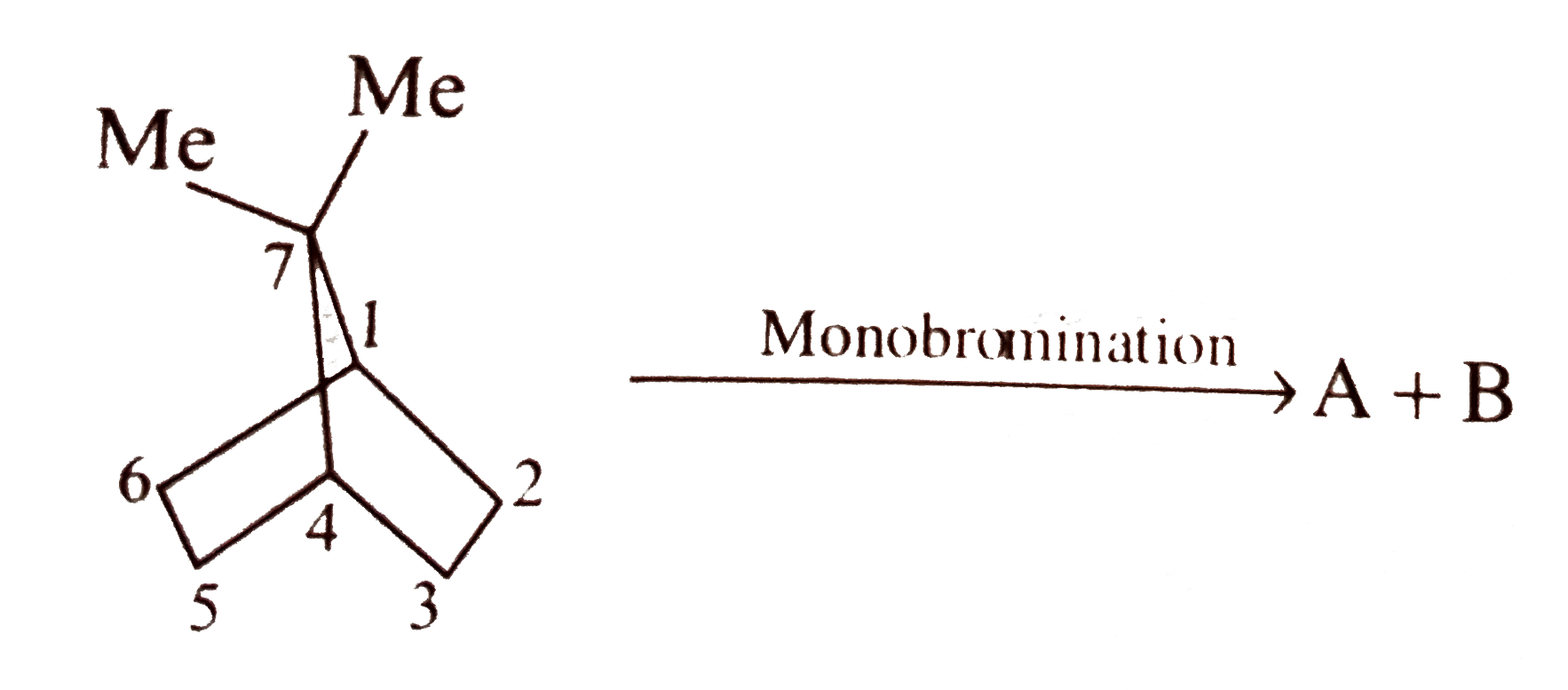Write the equations involved in the following reactions:
(i) Reimer - Tiemann reaction (ii) Kolbe’s reaction
Step-by-Step Solution
1. Starting Materials: The reaction begins with phenol (C6H5OH) and chloroform (CHCl3) in the presence of sodium hydroxide (NaOH).
Equation:
C6H5OH+CHCl3+NaOH→Intermediate
2. Formation of Intermediate: The phenol reacts with chloroform and sodium hydroxide to form a dichloromethyl phenoxide intermediate (C6H5OCHCl2Na).
Equation:
C6H5OH+CHCl3+NaOH→C6H5O−CHCl2Na+
3. Electrophilic Substitution: The intermediate then undergoes hydrolysis in the presence of H+ (acid) to yield salicylaldehyde (C6H4(OH)(CHO)).
Equation:
C6H5O−CHCl2Na++H+→C6H4(OH)(CHO)+NaCl+HCl
4. Final Product: The final product of the Riemer-Tiemann reaction is salicylaldehyde.
Final Equation:
C6H5OH+CHCl3+NaOH→C6H4(OH)(CHO)+NaCl+HCl
---
(ii) Kolbe’s Reaction
1. Starting Materials: The reaction starts with phenol (C6H5OH) treated with sodium hydroxide (NaOH) to form sodium phenoxide (C6H5O^-Na^+).
Equation:
C6H5OH+NaOH→C6H5O−Na+
2. Electrolysis: The sodium phenoxide undergoes electrolysis, leading to the formation of phenyl radicals, which then couple to form a dimer.
Equation:
2C6H5O−Na+Electrolysis−−−−−−−→C12H10O4+NaOH
3. Acidification: The dimer is then treated with acid (H+) to yield salicylic acid (C7H6O3).
Equation:
C12H10O4+H+→C7H6O3+by-products
4. Final Product: The final product of Kolbe’s reaction is salicylic acid.
Final Equation:
C6H5OH+NaOHElectrolysis−−−−−−−→C7H6O3+by-products
---
Equation:
C6H5OH+CHCl3+NaOH→Intermediate
C6H5OH+CHCl3+NaOH→C6H5O−CHCl2Na+
C6H5O−CHCl2Na++H+→C6H4(OH)(CHO)+NaCl+HCl
C6H5OH+CHCl3+NaOH→C6H4(OH)(CHO)+NaCl+HCl
C6H5OH+NaOH→C6H5O−Na+
2C6H5O−Na+Electrolysis−−−−−−−→C12H10O4+NaOH
C12H10O4+H+→C7H6O3+by-products
C6H5OH+NaOHElectrolysis−−−−−−−→C7H6O3+by-products
Similar Questions
Write the equations involved in the following reactions :
(i) Reimer-Tiemann reaction
(ii) Williamson's ether synthesis
View SolutionWrite the equation involved in the following reaction :
(i) Reimer -Tiemann reaction
(ii) Williamson synthesis
View SolutionWrite the equation involved in the following reactions:
(i) Stephen reaction
(ii) Etard reagent
View SolutionReimer -Tiemann reaction involves a
View SolutionReimer -Tiemann reaction involves a
View SolutionWrite the equation involved in the following reaction :
(i) Williamson ether synthesis
(ii)Kolbe's reaction
View SolutionWrite the reactions involved in the following reactions:
(i) Clemmensen reduction
(ii) Cannizzaro reaction
View Solution(a)Write the reaction involved in the following:
(i) Reimer-Tiemann reaction
(ii) Friedal-Crafts Alkylation of Phenol
(b) Give simple chemical test to distinguish between Ethanol and Phenol.
View SolutionComplete the following reaction:
i.
ii.
View SolutionWrite the equation involved in the following reactions :
(i) Wolff-Kishner reductin (ii) Etard reaction
View Solution

